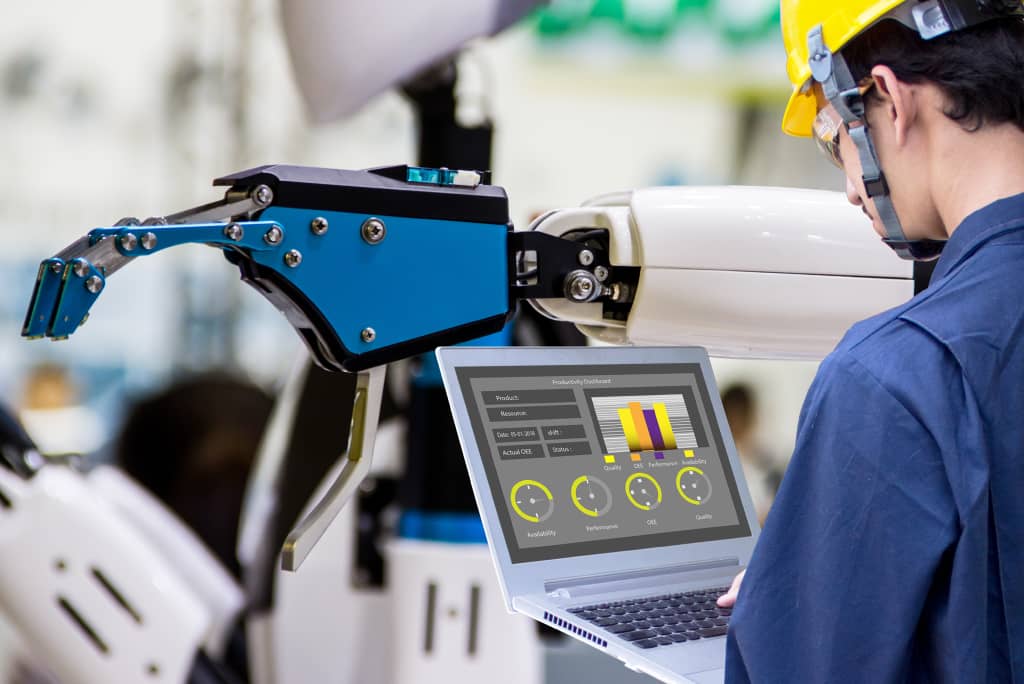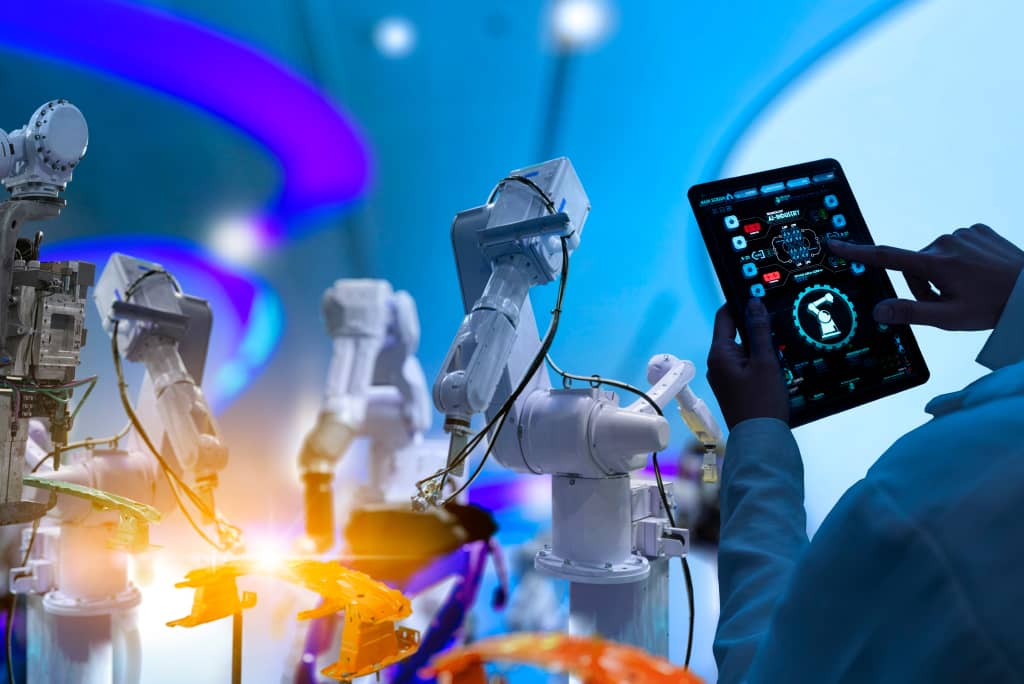RECENT POSTS

5 Ways PLC Programmers can Boost Manufacturing Performance
Programmable Logic Controllers (PLCs) sit at the intersection between plant hardware and business systems, controlling individual machine sequences while connecting to broader enterprise workflows. Experienced PLC programmers hold tremendous potential to drive productivity gains through robust PLC programming.
Here are 5 impactful ways PLC code quality and capabilities boost critical manufacturing metrics.
1. Optimizing PLC Code for Speed and Efficiency
One of the most impactful things a PLC programmer can do to boost manufacturing productivity is to write efficient code that allows machines and processes to operate at optimal speeds. There are several keys to tweaking PLC programming to improve performance, such as:
- Leveraging subroutines: Breaking complex programs into simpler reusable code blocks for streamlining editing, reducing program size, and improving organization.
- Implementing parallel processing: Allowing independent sequences to run simultaneously instead of waiting to maximize PLC scan efficiency.
- Eliminating unnecessary instructions: Removing redundant checks and overly complex logic to optimize scan times.
- Using efficient logic structures: Taking advantage of case statements and structured text to simplify program flow, versus nested IF/THEN statements.
- Carefully choosing data types: Selecting compact integer and float variables instead of strings or doubles to conserve memory and speed execution.
Faster and leaner PLC code means machines spend less time starting, stopping, or waiting—leading to reliable high-velocity manufacturing.
2. Implementing Predictive Maintenance Capabilities
Unplanned downtime is one of the largest hidden costs in manufacturing. PLC programmers can take an active role in predictive maintenance by building robust diagnostics and early warning systems into their control programs, including:
- Input validation: Continuously checking analog and digital signals for out-of-range values and reacting appropriately to faults to detect sensor issues.
- Performance tracking: Monitoring cycle times, motor currents, velocities, throughput rates, or other metrics to identify gradual performance declines needing attention.
- Usage/wear monitoring: Keeping track of run hours, switch activations, machine cycles, or other usage factors, automatically scheduling preventative maintenance when defined limits are reached.
- Analytics: Implementing trend analysis or mathematical models that predict failures based on deteriorating performance data from the PLC’s sensors and counters.
- Event logging: Maintaining detailed chronological logs of errors, warnings, operator changes, and other sequence deviations, which provide forensic data for troubleshooting.
Making effective use of the PLC’s constant connection to the physical equipment layers allows PLC programmers to code self-diagnostics to catch problems early while also collecting data for improved lifespan.
3. Improving Operator Interface Design
The human-machine interface (HMI) provides the window through which machine operators monitor and control production. An effective HMI design is critical for enabling personnel to keep the manufacturing process flowing smoothly. Some key principles for PLC programming include:
- Intuitive navigation: Using a consistent and hierarchical navigation scheme across all screens so operators can quickly access data with relevant information taking fewer clicks to reach.
- Performance dashboards: Designing home pages to show key overall equipment effectiveness (OEE) metrics and status using graphics like gauges, counters, and color indicators that instantly convey information.
- Responsive indicators: Making actions, modes, and sequence steps abundantly clear using animations, color schemes, shape coding, and pop-up messages rather than plain text alone.
- Error guidance: Equipping all faults and warnings with clear explanations and guided troubleshooting instructions to help operators resolve issues decisively.
- Role-based access: Determining appropriate access levels and data visibility for each user role and locking out sensitive parameters but allowing operators to control routines within their responsibility.
Well-organized, graphically enhanced HMIs with contextual guidance empower staff with varying skill levels to keep production running smoothly.
4. Tightening System Integration
While PLC programming controls localized machine sequences, it cannot optimize broader manufacturing workflows in isolation. Deep integration with supervisory systems like ERP, MES, and supply chain platforms puts production data in context for smarter decision-making. PLC programmers help close these integration gaps by programming:
- Standard communications: Using established industrial protocols to simplify peer-to-peer data sharing between systems and implementing robust handshaking and error detection in PLC routines.
- Total visibility: Exposing all PLC tags, counters, and status flags that provide value and mapping these to information models used by other platforms to align the plant floor with business KPIs.
- Events and notifications: Sending real-time alerts from the PLC to other systems, such as alerting production schedulers if a job misses its deadline.
- Bi-directional control: Allowing supervisory systems to write configuration parameters.
Context gives PLCs more intelligence. Tight integration with data flows and systems across the enterprise turns simple automation into an adaptive part of a larger coordinated manufacturing organism.
5. Adding Remote Monitoring and Control
Connecting PLCs over remote networking opens new capabilities that boost productivity and responsiveness. Secure PLC programming can provide:
- Remote monitoring: Enabling the reading of PLC registers without requiring an on-site visit.
- Parameter adjustments: Safely allowing certain non-critical set points like temperature targets or speed profiles to be established for production flexibility.
- Remote control: Constructing code to allow essential machine operations like starting, stopping, or cycling to happen remotely after identity and access verification.
- Security layers: Protecting industrial control networks and authenticating all remote clients with multiple security layers.
- Backups and updates: Remotely backing up programs or pushing updated code for quick iteration to improve quality and functionality without needing recalls.
Empowered connectivity with proper cybersecurity opens new potential to drive productivity improvements through better data, faster change management, and reduced downtime—no matter where you work or where the control point is located.
PLC Programming Benefits the Entire Production Environment
Efficient PLC code enhances equipment throughput, longevity, quality, flexibility, and connectivity. Skilled PLC programmers can offer significant value by interweaving automation with predictive, assistive, and remote capabilities—driving operational excellence.
Need help with PLC programming? Contact Pacific Blue Engineering today at (657) 201-8603 or request a consultation online.
similar posts
Certifications
Contact Us
Telephone:
Corporate Office “The Shop”
Pacific Blue Engineering, LLC
2880 Orange Ave
Long Beach, CA 90755
© All contents copyright © 2023 by Pacific Blue Engineering













